Differential Analysis of Serum Principal Components Treated with Compound Sophora Decoction and Related Compounds Based on High-Resolution Mass Spectrometry (HRMS)
- PMID: 33062021
- PMCID: PMC7545453
- DOI: 10.1155/2020/7518479
Differential Analysis of Serum Principal Components Treated with Compound Sophora Decoction and Related Compounds Based on High-Resolution Mass Spectrometry (HRMS)
Abstract
Objective: To compare the differences in the serum principal components in ulcerative colitis- (UC-) induced rats, treated with compound Sophora decoction, matrine, oxymatrine monomer mixture, and indirubin monomer, and to provide a modern scientific basis for elucidating the clinical efficacy of compound Sophora decoction for the treatment of UC.
Methods: The serum samples of rats from each group were obtained after drug administration, and the serum principal components of each group were analyzed by high-resolution mass spectrometry. Agilent Eclipse XDB C18 chromatographic column (100 mm × 2.1 mm, 3.5 m) was used for separation. The mobile phase was water (A) and methanol (B) (0.1% formic acid) gradient elution, 0-3 min (B: 20%-40%), 3-10 min (B: 40%-54%), 10-25 min (B: 54%), 25-35 min (B: 54%-70%), 35-45 min (B: 70%-80%), 45-50 min (B: 80%), 50-60 min (B: 80%-100%), 70-72 min (B: 100%-20%), and 72-77 min (B: 20%); flow rate, 300 μL/min; column temperature, 40°C; and injection volume, 10 μL. ESI source was selected and scanned in the positive and negative ion modes. The scanning range was 70-1500 m/z; ion-source gas 1 (GS1): 55 psi; ion-source gas 2 (GS2): 60 psi; CUR: 30 psi; ion-source temperature (TEM): 550°C; ion-source voltage (ISVF) : 5500 V/-4500 V; decluster voltage (DP): 100 V; collision energy (CE): 35 V/-35 V; collision energy gain (CES) : 15 V/-15 V; and data acquisition mode: IDA. After the data from each group were imported into MarkView 1.3, the molecular weights and retention times of different substances were obtained and qualitatively analyzed by ChemSpider and PeakView 2.0.
Results: In the negative ion mode, 26 differential compounds were identified in the compound Sophora decoction group (FFKST) compared to the model group (M), and 18 differential compounds were identified in the matrine and oxymatrine group (KST) compared to the model group (M). In the positive ion mode, 11 and 7 differential compounds were identified in the compound Sophora decoction group (FFKST) and the matrine and oxymatrine group (KST) compared to the model group (M), respectively. The responses of all compounds in each group were compared with each other. As the different principal component substances in the indirubin group (DYH) displayed little correlation with other groups, the different components in this group were not researched thoroughly.
Conclusion: By comparing the differences in the serum principal components from each administration group, we found that the FFKST group exhibited enhanced synthesis of the serum principal components; however, the compound doses of matrine and oxymatrine monomers did not exhibit the same changes in the serum principal components of UC-induced rats. Finally, the traditional Chinese medicine compound is more advantageous than monomers.
Copyright © 2020 Wanjin Sun et al.
Conflict of interest statement
The authors declare that there are no conflicts of interest regarding the publication of this paper.
Figures
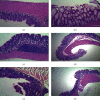
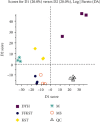
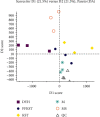




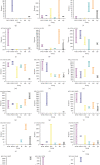
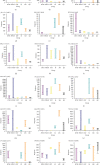
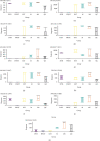

References
-
- Zhang X. M., Shou Z. X., Fan H. Effect of QRZSLXF on colon tissue repair in rats with ulcerative colitis. Journal of Traditional Chinese Medicine. 2014;55(20):1764–1767.
-
- Zuo D., Tang Q., Fan H., et al. Modulation of nuclear factor-κB-mediated pro-inflammatory response is associated with exogenous administration of bone marrow-derived mesenchymal stem cells for treatment of experimental colitis. Molecular Medicine Reports. 2015;11(4):2741–2748. doi: 10.3892/mmr.2014.3038. - DOI - PubMed
-
- Zhou P. Q., Fan H., Hu H., et al. Role of DOR-B-arrestin1-Bcl2 signal transduction pathway and intervention effects of oxymatrine in ulcerative colitis. Huazhong University of Science and Technology. 2014;34(6):p. 1672. - PubMed
-
- Wu S.-T. Study on the Effective Components and Mechanism of Compound Sophorae Decoction against Ulcerative Colitis. Wuhan, China: Hubei University of Chinese Medicine; 2017.
LinkOut - more resources
Full Text Sources
Research Materials
Miscellaneous

